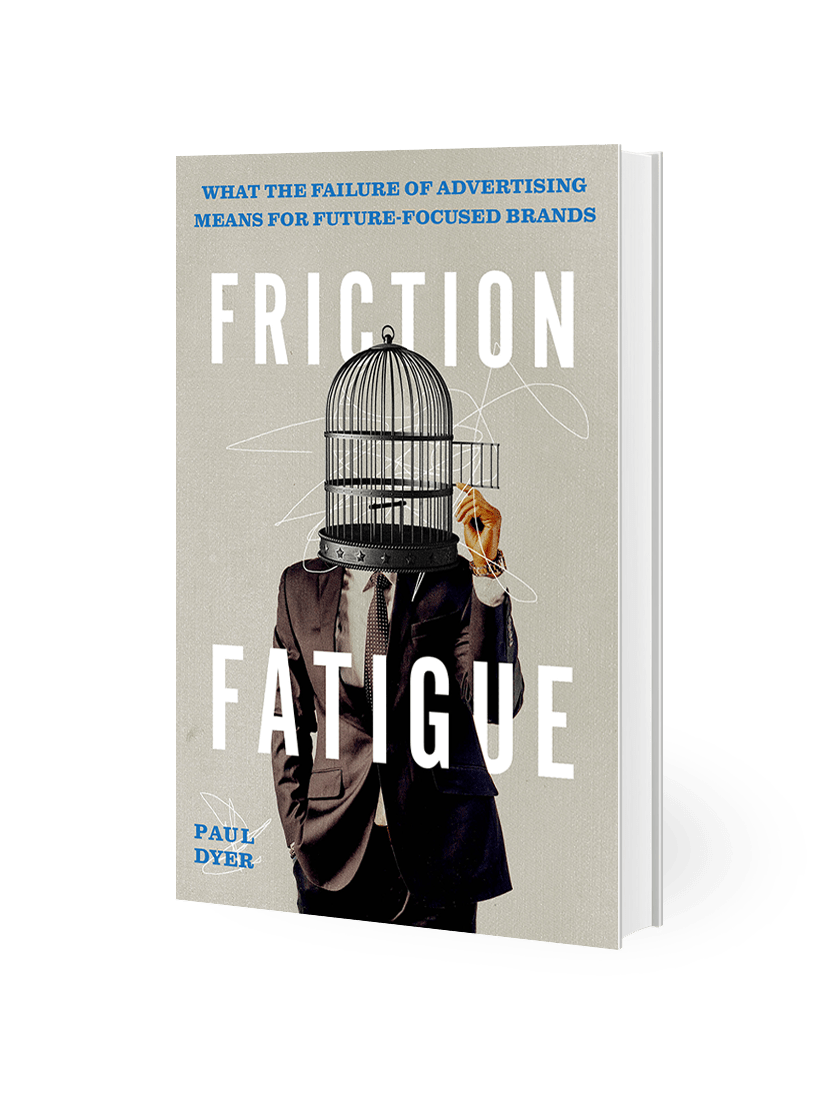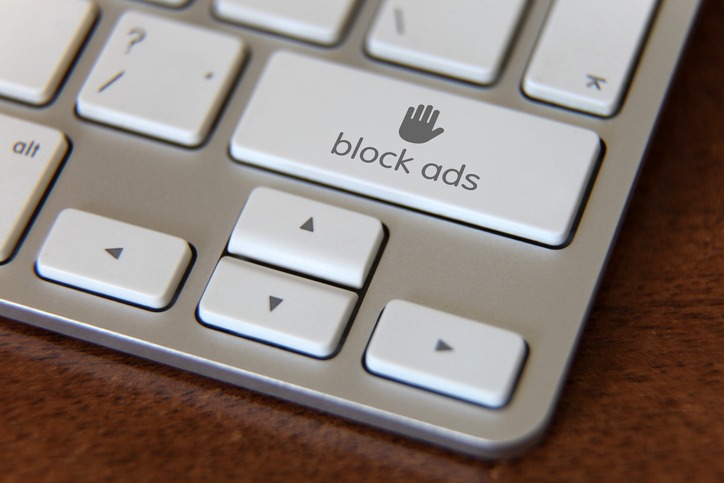Lippe Taylor’s Paul Dyer makes the case that the advertising model is broken, as consumers increasingly seek ad-free experiences online. That creates an opportunity for PR.
In Paul Dyer’s view, the modern advertising model is broken. The CEO for Lippe Taylor has made the argument against the current ad landscape the central theme of his new book “Friction Fatigue.”
“There’s been for the last 10 years a steady progression of changes in the media landscape that have led us to where we are today, which is Google and Facebook now commanding more than half of the advertising dollars in the industry,” Dyer says. “What they’ve left behind is a sort of a bloodbath of media outlets that can no longer survive on what’s left.”
But it’s not just media companies that are abandoning the digital ad model, Dyer argues. Consumers also are less interested in what advertisers have to say—and are willing to pay a premium to stop having their experience interrupted.
“All of us have now spent the last 15 years being a wash with content,” says Dyer, “always available on our devices and constantly, giving us choice. And the more that we have choice, the less patience we have for being interrupted.”

Paul Dyer
This has created what Dyer calls a “death spiral” for advertising. As ads become less and less effective, brands are willing to spend less on them and advertisers are forced to be more and more intrusive to get their message in front of new audiences. And consumers hate those interrupting messages.
“Consumers are skipping them; they’re blocking them,” Dyer says. “They’re actually angry about them.”
A lesson from Bloomberg
This current dilemma facing brand managers and marketers really stood out to Dyer in the 2020 election cycle, when former New York Mayor Michael Bloomberg heavily outspent his opponents in the Democratic primary—only to be bounced from the race having spent $18 million per delegate.
“[Bloomberg] spent over half a billion dollars on advertising in less than six months and crashed out of the race of 58 delegates,” Dyer says. “It’s just this remarkable demonstration that ads are just not working like they used to.”
And the COVID-19 pandemic has only exacerbated the problem.
“People are just tired of life being harder than it used to be,” Dyer says. Their trust has been broken, and where they might have been less interested in how their personal data was being used by companies to serve ads to them, they now are asking tougher questions about how the economy works for them or against them.
A lesser of two evils?
Dyer breaks down how big advertisers try to get consumer attention in two formats, both with inherent tradeoffs.
“You can choose one of two evils,” he says. “You can choose being interrupted, or you can choose being intruded upon.” Intruding on consumers lives and privacy is the choice that ads from Facebook and Google make, where they harvest vast amounts of personal data to track you and your desires around the internet.
Or, ads can learn nothing about you and your personal data, but instead rely on seducing you with a sports program or entertainment product. And then interrupt you to sell their product, regardless of your interest in it. Both are terrible experiences for the consumer, Dyer argues.
“Being tired of being interrupted is something that’s been developing for 15 years now,” he says. “Being tired of being intruded upon I think is much more recent; it probably was actually sparked by Cambridge Analytica and the 2016 election really brought it to the forefront of people’s consciousness.”

A moment for PR
With advertising’s power waning, Dyer sees this moment as a huge opportunity for PR and media relations. In particular, the rise of purpose-driven communications and the desire for organizations to have something to say is a perfect fit for the talents of PR pros.
“Advertising is a business that prides itself on being persuasive, and its greatest persuasion was convincing everybody about how effective it was,” Dyer says. “And I think that what’s happened over the last couple of decades is that many people have come to just equate marketing with advertising as if they’re the same thing. They’re not the same thing.”
Instead, Dyer sees PR as an alternative to advertising, the opportunity to do something that is worth talking about—newsworthy, even.
Dyer gives examples of what some of these activities are in the current landscape: “They’re taking a stance; they’re funding some new kind of program; they’re partnering with an external third party that maybe would have been a competitor in a previous life—now they’re opening up their IP and partnering with them.”
“It’s the difference between doing something and saying something,” Dyer says.
As examples, he points to the winners of Cannes Lions this year, including “The Bread Exam” which worked to help women in Middle Eastern communities learn to check for breast cancer without violating cultural values around modesty. As a counterpoint, he gives the example he uses in the book to demonstrate the advertising model that is product-focused: Dr. Pepper.
The difference purpose makes
Dr. Pepper spent millions on its campaign “Fansville,” a series of TV spots tied to college sports programming. But for Dyer, the ad series fails to have a meaningful takeaway message beyond “Drink more Dr. Pepper.”
“They’re just advertising this saying if there was a city where everybody in the city cared about college football, they would drink Dr. Pepper,” he says. “That’s just advertising at its essence.”
And yet, Dr. Pepper is running another activation at the same time that offers more than a sales pitch. At halftime, they have a contest where college students can come onto the field and throw a football into a can. If they hit enough targets, they win a scholarship.
“That’s an activation,” Dyer says. “You’re doing something worth talking about.” When you look at the activation versus the TV ad, Dyer says you can see both increased conversation about the scholarship contest and more positive sentiment than from the “Fansville” ad series.
“That’s just a really good example where ‘Fansville’ is the best of the old school,” Dyer says. “It is the best of the way we used to do it.” The halftime show, alternatively, is an example of a brand doing something that is intrinsically worth talking about.
Removing the friction
However, advertising and traditional paid media aren’t going anywhere anytime soon. So how can brand managers help to create a better experience for consumers?
Dyer has several recommendations:
- Make all ads skippable. Beyond good manners, this is an essential step for marketers to keep audiences’ goodwill, Dyer argues. If people don’t like an ad, they can skip it and move on with their life. “I’m not going to try and force them to watch my ad.”
- Listen to consumers. With good listening, you can discover opportunities to offer consumers what they are really looking for. It could be a tweak in your marketing messaging, but it could also be a nonprofit that your audience wants you to work with, a new product they want you to launch.
- Activate–don’t advertise. Like the Dr. Pepper example, do something worth talking about rather than just pitching your product.
- Collaborate as a strategy. Find other brands and organizations that are looking to engage the same audience that you are targeting, and work with them on bigger campaigns.
- Engage audiences rather than target them. “Take a conversational approach where you’re going to speak through third parties, you’re going to get experts, editors, reviewers, etc. to endorse your message instead of just trying to say everything yourself,” Dyer says.
- Don’t put paid media first in your strategy. “If you start by planning paid media first, you will without a doubt end up with something that’s not worth talking about,” Dyer says. “Instead, you do everything else first, and then you come in and you use paid media to just encourage more people to check out your activation.”
- Home page
- Content Marketing
- Digital Marketing Strategy
- Digital Marketing Strategy
- Digital Marketing Strategy
- PPC
- SEO
- Social maketing
- WordPress web development


